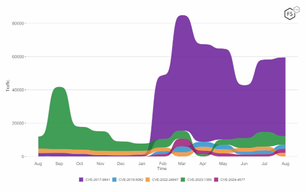Another risk is that attackers might modify a web application by injecting JavaScript miners, like Coinhive or another web-miner, into visitors’ browsers. The attackers are then able to leverage the compute resources of all website visitors for their own benefit. Within the last week, there has been an aggressive text message-based campaign attempting to rope smartphones into crypto mining operations by luring users to click on a link that promises them free Bitcoins.
As data theft becomes less profitable for attackers (credit card data has recently sold on the black market for as little as $0.0003 per record), cryptocurrencies become a more attractive target for cyber-criminals. And that makes every application a potential target. The Internet is a great equalizer in that no application, no matter where it might be located, is immune. Attackers don’t discriminate by industry, either. Whether you’re a manufacturer in the American Midwest or a large financial services organization on the east or west coast, you’re not safe from these attacks.
The best way to protect your environment from cryptojacking is by placing a web application firewall in front of all your applications. Then, look for the classic symptom of poor performance and dig in deeper from there.
Since cryptocurrencies are such a hot topic right now, threat intelligence teams around the world are actively looking for cryptocurrency mining bots and publishing everything they find, typically including Indicators of Compromise (IOCs). Security teams should be looking for those publications and making sure their networks are not communicating with any of the cryptocurrency mining command and control servers published in the IOCs.


